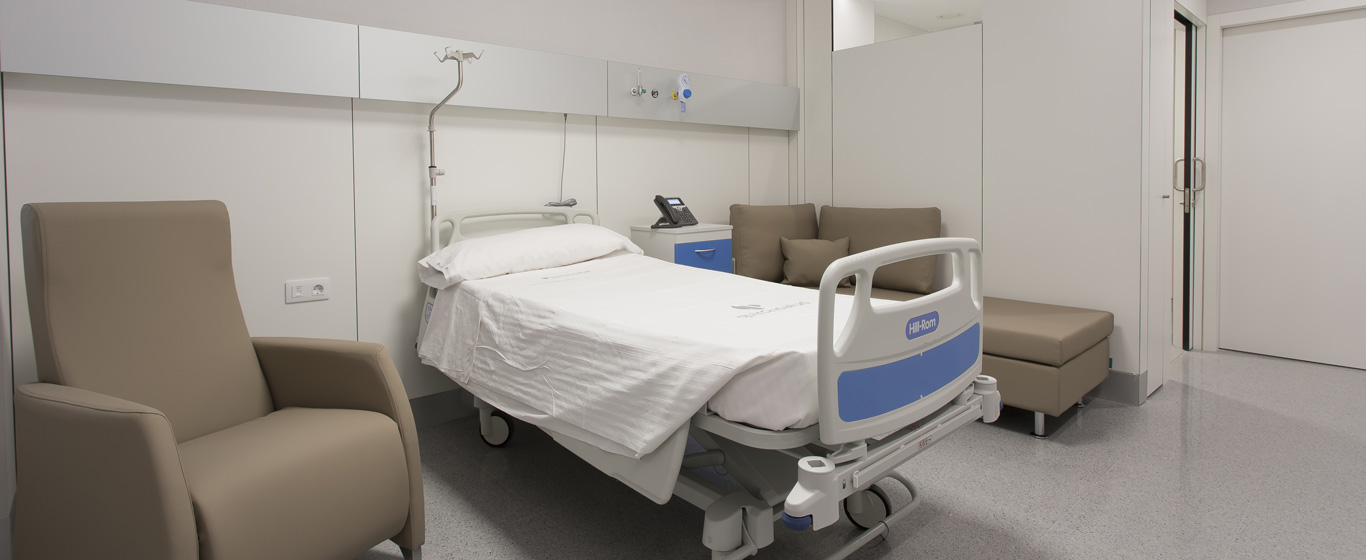Heart Disease
What types of heart diseases exist? Which are the most common? Learn everything about their causes, symptoms, diagnostic methods, and the most appropriate care for these conditions.
Symptoms and Causes
Heart disease refers to various conditions or pathologies that affect both the heart and blood vessels, which is why it is also known as cardiovascular disease. These conditions are among the leading causes of mortality and disability in developed countries.
Depending on their characteristics, heart diseases are classified into several types:
- Congenital heart disease: Structural problems of the heart or arteries that originate from it, present from birth, and develop during pregnancy (embryonic period).
- Cardiomyopathy: Affects the heart muscle, known as the myocardium. The most common types are:
- Ischemic heart disease: A decrease in blood flow to the heart, weakening the myocardium.
- Myocarditis: Inflammation of the heart muscle due to an infection.
- Coronary artery disease: The blood vessels that supply blood to the heart muscle gradually narrow and stiffen due to plaque buildup (cholesterol or fat) on their inner walls. If undetected and untreated, this condition can lead to:
- Angina: Chest pain caused by insufficient blood flow.
- Heart attack or myocardial infarction: A total blockage of blood flow in the coronary arteries, leading to the heart muscle stopping and potentially dying if oxygen supply is not restored in time.
- Cardiac arrhythmia: Abnormalities in the rhythm and frequency of heartbeats. It can manifest as tachycardia (fast rhythm), bradycardia (slow rhythm), or atrial fibrillation (irregular rhythm).
- Heart failure: The heart is unable to pump enough blood to meet the body's needs.
- Valvular disease: A disorder affecting the heart valves. There are four valves (mitral, aortic, tricuspid, and pulmonary), with aortic valve disease being the most common.
Although some heart diseases cannot be prevented, maintaining a balanced diet and adopting healthy lifestyle habits help ensure good cardiovascular health. In most cases, early detection is crucial to prevent complications, so routine check-ups are recommended starting at age 40 or 45, or earlier if there is a family history.
Symptoms
Each heart disease presents different symptoms, but some appear in almost all cases, including:
- Nausea and vomiting
- Dizziness
- Fatigue
- Confusion and disorientation
- Pain in the chest, arms, jaw, head, or back
- Shortness of breath
- Excessive sweating
- Swelling in the ankles, legs, or feet
Causes
The primary cause of cardiovascular diseases is atherosclerosis, which consists of fat and cholesterol buildup in the arteries. Additionally, high blood pressure, diabetes, stress, excessive consumption of stimulant foods and drinks, alcohol abuse, smoking, and certain infections can lead to heart conditions.
Risk Factors
The factors that increase the risk of cardiovascular diseases the most are:
- Advanced age, as blood vessels become stiffer and the myocardium weakens over time.
- Family history
- Smoking
- Obesity
- High cholesterol
- Hypertension
- Sedentary lifestyle
- Poor diet
Complications
Some of the most serious complications of heart disease include:
- Heart attack, acute myocardial infarction (AMI)
- Stroke: Narrowing of the brain's blood vessels
- Internal bleeding: Occurs when an aneurysm (an abnormal bulge in the weakened wall of an artery) ruptures
- Sudden death: The heart suddenly stops due to an electrical system failure
Prevention
The best way to prevent heart disease is to maintain a healthy lifestyle, which includes:
- Following a varied diet rich in fruits, vegetables, and omega-3 fatty acids while low in salt and saturated fats
- Engaging in moderate physical exercise regularly
- Avoiding obesity
- Not smoking
- Reducing alcohol and stimulant beverage consumption
- Getting enough sleep (between 7 and 9 hours per day)
- Controlling stress, hypertension, and high cholesterol
What doctor treats heart diseases?
Cardiologists, vascular surgeons, and specialists in family medicine are responsible for diagnosing and treating heart diseases.
Diagnosis
The tests used to diagnose heart disease are as varied as the types of conditions that exist. In addition to analyzing lifestyle, clinical history, and family history, common examinations include:
- Electrocardiogram: Records the heart’s electrical activity at rest.
- Exercise stress test: An electrocardiogram is performed while the patient exercises under controlled conditions with gradually increasing intensity.
- Holter monitor: Tracks heart activity over 24 hours while the patient follows their daily routine.
- Cardiac catheterization: Evaluates the anatomy of the heart and coronary arteries, as well as heart function.
- Echocardiogram: Displays heart rhythm and how blood flows through the heart, providing a moving ultrasound image of the heart.
- Coronary angiography: Uses X-rays to examine the condition of the blood vessels that supply the heart (coronary arteries).
- Cardiac computed tomography (CT): Provides non-invasive imaging of heart structures using X-rays.
Treatment
Heart diseases require personalized approaches tailored to the characteristics and health status of the patient as well as the type of condition they have. Treatments can generally be classified into three types:
- Recommendations for lifestyle changes to promote long-term health benefits.
- Medications: Some of the most commonly used include:
- ACE inhibitors and ARBs to lower blood pressure
- Beta-blockers to reduce heart rate and strengthen the myocardium
- Cardiac surgery and other procedures: Heart surgeries can be performed to implant defibrillators, place pacemakers, insert a stent to correct coronary artery narrowing, repair or replace valves, perform ablations to control arrhythmias, or, in extreme cases, carry out heart transplants.








